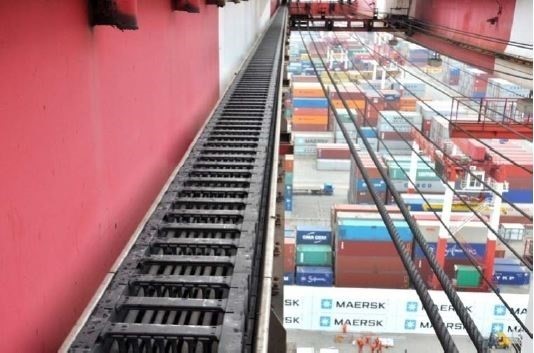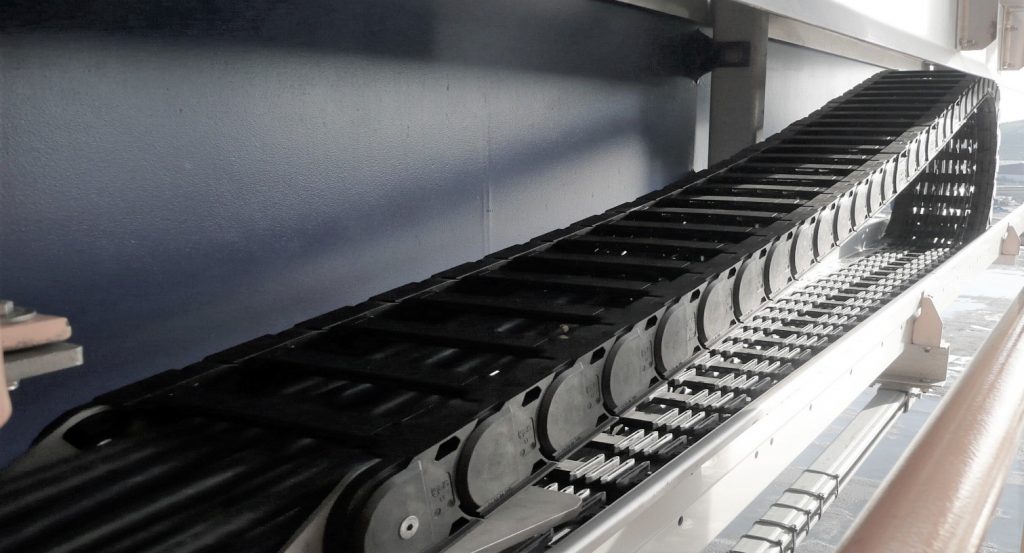Rol e-chain: development and application scenarios
Theo Diehl | 30. March 2020
With long travels of more than 100m and high additional cable loads, in conjunction with accelerations of more than 1m/sec2,, increasingly higher push/pull forces have occurred with the gliding e–chain. Slide pads are not suitable for counteracting these higher forces, but they are intended to reduce wear on the sliding surface without changing the sliding/friction behaviour. Since igus operates its own development laboratory for plastics, a highly abrasion-resistant plastic is used for the entire range of e-chains. With the use of rollers, sliding friction is turned into rolling friction, which enables a reduction of the push/pull forces by up to 75%.
This insight has opened up new areas of application for energy chain systems.
In the past, festooning, or cable trolley systems, were used in harbour crane technology, but the picture has changed considerably today. Many cranes such as RTGs, RMGs, ASCs, STS or shipyard cranes are equipped with rolling energy chains.

Development stage of heavy duty
Using the initial application experiences, the roller chain from igus was always further advanced. The first goal was and still is to increase the service life of the energy supply system. In 2004 the heavy-duty roller chain was placed on the market. In the heavy-duty version, all relevant areas have been increased and thereby the surface pressure reduced. The HD roller chain has moved the parameters relating to speed, fill weight, acceleration and travel distance up again. Now speeds of more than 300m/min with cable loads of more than 25kg/m and travels of more than 100m could be implemented.

Development stage P4 energy chain
The next step in the development took place in 2009. With the new P4 roller chain, the focus was again on increasing the service life expectancy, but the increasingly stringent noise regulations were also taken into account. Especially for RMG cranes used for container handling in inland ports or railway loading stations, where residential buildings are often located in the immediate vicinity.

Development stage P41 energy chain
Once the roller chain had established itself on dockside crane systems, a further development step was taken in 2018. Especially on STS cranes a service life of 15 years is expected for the e-chain and cables. Now the two igus product lines are coming together. To meet expectations, the pin/bore connection in each chain link was fitted with a plain bearing, reducing material abrasion to almost zero.

On our website, you will find more examples and solutions for cable guidance in harbour crane applications and our brochure that can be downloaded free of charge.
Do you have questions or an application that you would like to discuss with us? Arrange an appointment for virtual consultation now

